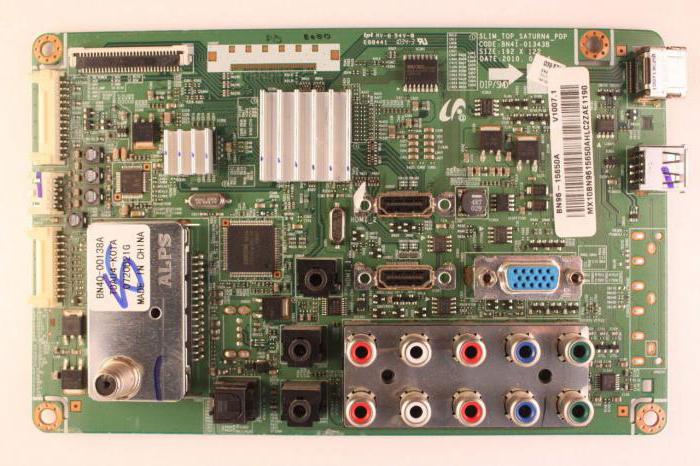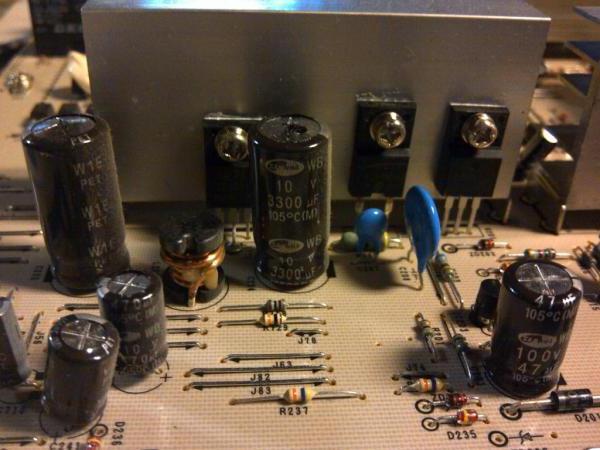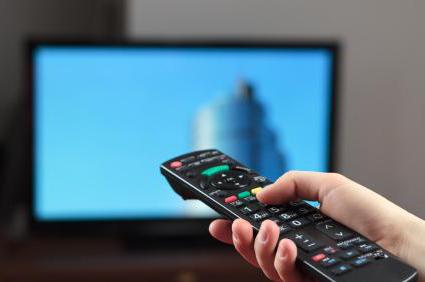The TV does not turn on: reasons and repairs
Like any other equipment, TVs can malfunction and suddenly fail. Moreover, these failures appear regardless of the operating life of the device. For example, sometimes the TV does not turn on. When trying to turn it on again, various indicators blink and the relays click. There may be other “symptoms”. Let's look at why TVs refuse to work and what needs to be done in such a situation.
Common causes of malfunctions
This problem can appear for a variety of reasons. It happens that the LED indicators blink as usual, but the TV still does not want to start. The indicator also lights up red, but the device cannot be controlled from the remote control and does not turn on.
Often the TV does not turn on either from the remote control or from the button. The indicator on the case does not light up. Another symptom is something clicking or buzzing inside the case. The device makes various, sometimes quite strange sounds, but still does not turn on.
Indicators flash
If they flash on the case, it means that the device is conducting diagnostics on its own and will soon find out the cause of the problem. Often on various models you can observe that the lamp or a certain number of times. This is how he reports a specific error. Some of the codes for them can be found in the operating instructions. TVs from manufacturers such as Sony, Philips, Panasonic and others have a self-diagnosis function. The central processor receives information from the main devices and blocks via data buses. If a faulty node is detected, the processor will block the power-on command. Therefore, if the Philips TV does not turn on, but the indicator is blinking, you need to read the error and decipher it. Then you can try to fix the problem. A similar symptom also appears when the TV panel acts as a computer monitor. If the PC went into or turned off, then when you press the power button on the remote control, the LCD panel will flash the LED several times.
The indicators are always on
A glowing diode informs the user that the device’s power supply is normally receiving supply voltage. What to do if the TV does not turn on and does not respond to signals from the remote control? The first thing is to try to turn it on using the buttons on the TV itself. Perhaps the malfunction is due to incorrect operation of the remote control or some errors associated with it. But TV itself is certainly not to blame here.

If the LG TV does not turn on and similar symptoms are observed, then it’s all about the 4.7 kOhm ceramic resistance. It is located near the processor - this is a break. Replacing the resistor will help restore the device's operation. There are several actions you can take. First of all, check whether the batteries in the remote control are working properly and whether the contacts are oxidized. Next, check the infrared emitter and its integrity. Then the buttons are diagnosed. They can stick, which is why the panel does not respond to commands. If the Samsung TV does not turn on, but the indicator is on, then the reason must be sought in the electronic components. Something has caused a change in the properties of the capacitors, so the power supply can no longer provide the device with a normal start. The only caveat is that determining the localization of this malfunction will take some time.

Experts also recommend disassembling the control panel and cleaning it from the inside. Dust often accumulates in them. This does not have the best effect on the operation of the device. If the remote control has been spilled with coffee, beer or any other liquid and can no longer work, then it is easier to buy a new one. If the LCD TV does not turn on after pressing the buttons on the control panel, then there are only two possible options why this happened.
Protection
This is one of the possible reasons. In this case, the TV may try to start, but literally after a few seconds the screen goes blank or completely stops responding to all attempts to start it. The main and popular cause of this problem is a failure in the power supply to the home network. The power system in modern TVs loves stable and high-quality voltages. The most effective way to help solve this problem is to completely disconnect the device. This can be done by unplugging the plug from the socket. After some time, the device will recover. If there are constant problems with voltages, then the best solution is to turn on the TV through stabilizers, uninterruptible power supplies, or at least through standard surge protectors. But it’s best if you want to avoid such problems, turn off the panel when leaving the house. Then you won’t wonder “why the TV won’t turn on.”
Problems in the processor
Modern TV panels are equipped with a huge amount of control electronics. Schematically, they are small PCs with a separate CPU that controls all the important processors.

For example, if we look at the circuit diagram of an LED TV, we can see that the control voltages are supplied to the LED diode through the Stand-by contact and through the transistor. If there is a short circuit here, the TV will not turn on. Then you can’t do without contacting specialists at the service center. Of course, if you have the knowledge and necessary skills, you can try to fix the problem yourself. However, the trouble is that there are no electrical circuit diagrams for televisions in the public domain. And without them it is very difficult to repair the panel.
TV does not turn on, indicators do not light up
These symptoms are directly or indirectly related to the lack of electrical power. If the lamp simply burned out, then the device would function as usual (no indication). If this happens, then there is no need to panic. First you need to eliminate all possible malfunctions that can be corrected on your own. But there are situations that are more complicated. For example, the LG TV does not turn on, and the problem lies in the breakage of the fuse resistor.

Through these resistors, a voltage of +12 V is supplied to the circuit. After replacing the element, the TV operates in normal mode.
No voltage at the socket
Sometimes circuit breakers in switchboards trip unnoticed. There is a problem with the outlet itself. This can be diagnosed using an indicator or multimeter. If there is no power, check the machine. If that doesn't help, change the socket.
Extension cord faulty
This is a common reason why the TV does not turn on.

You can simply check - if the device works from the outlet, but does not want to start through the extension cord, then the problem is clearly in the wire.
Incorrect mode selection
It often happens that a person accidentally or intentionally selects inappropriate operating modes for the device. In this case, the TV may turn off and not turn on or go into sleep mode. In this case, resetting the settings to factory settings will help.
Malfunctions of electronic elements
As noted above, if the Philips TV does not turn on, this is due to failed electronic components. For example, for some reason resistors or capacitors burned out. The current problem is fuses.

It is better to entrust the diagnosis and repair of such faults to professionals. Do-it-yourself repairs can be very expensive. If the Philips TV does not turn on, this is due to a broken capacitor in the power supply. As a result, 13 V is supplied to the circuit instead of the required 18.5. This is often the cause of breakdown. Without the necessary knowledge, it is very difficult to identify this problem yourself - this is the job of service engineers.
Conclusion
If a Samsung TV does not turn on (and this applies to any brand), this does not mean that it is irreparably broken. It can be revived using simple methods. But if the problem is in capacitors or a resistor, you should not undertake repairs without proper experience.






